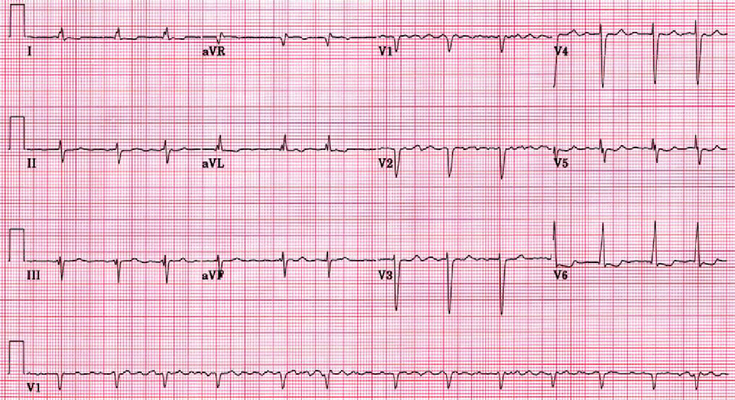
Acute atrial fibrillation with rapid ventricular rate
- If patient is experiencing symptoms get an IV placed and cardiac monitoring started
- If the patient is hemodynamically unstable give them synchronized cardioversion
- with rapid ventricular rate the goal is to get the heart rate below 110 bpm, and this is done with rate control medications. Find out if they have heart failure (acute decompensated heart failure) – if yes, then they will usually get digoxin or amiodarone. If no, then a calcium channel blocker like diltiazem or a beta-blocker like metoprolol
- If they received electrical cardioversion they will need anticoagulation for 1 month
Chronic Atrial fibrillation
- Rate and Rhythm control have similar efficacy (AFFIRM trial). Rate control can be achieved with diltiazem or metoprolol. Rhythm control requires a procedure – first anticoagulate for 3 weeks, then cardiovert (burn/ freeze tissue aka ablation), then 4 weeks of anticoagulation.
- Long term anticoagulation is needed for some to prevent stroke. Which patients need this is determined by the CHADS-Vasc score. A score of 0 gets no anticoagulation. Score of 1 has several options: no anticoagulation, daily low dose aspirin, or anticoagulation medication. Score of ≥ 2 gets anticoagulation medication.
- CHF gets 1 point
- HTN gets 1 point
- Age > 65 gets 1 point
- Age >75 gets 1 point
- DM gets 1 point
- Stroke or TIA gets 2 points
- Vascular disease (CAD, PVD, etc) gets 1 point
- Drug choices for long term anticoagulation include warfarin (older, well known) and the newer NOACs (novel or non-vitamin K oral anticoagulants) also called DOACs (direct acting oral anticoagulants). Warfarin has the benefit of being well studied and having a reversal agent, however, it requires frequent labs to ensure INR is maintained at 2-3 and patients need to avoid certain leafy vegetables to avoid reversal of warfarin’s action. The NOACs (dabigatran, apixaban, rivaroxaban, edoxaban) don’t have a goal INR to ensure and thus no frequent lab checks, however, they are less studied and have no reversal agent yet.
References, Resources, and Further Reading







